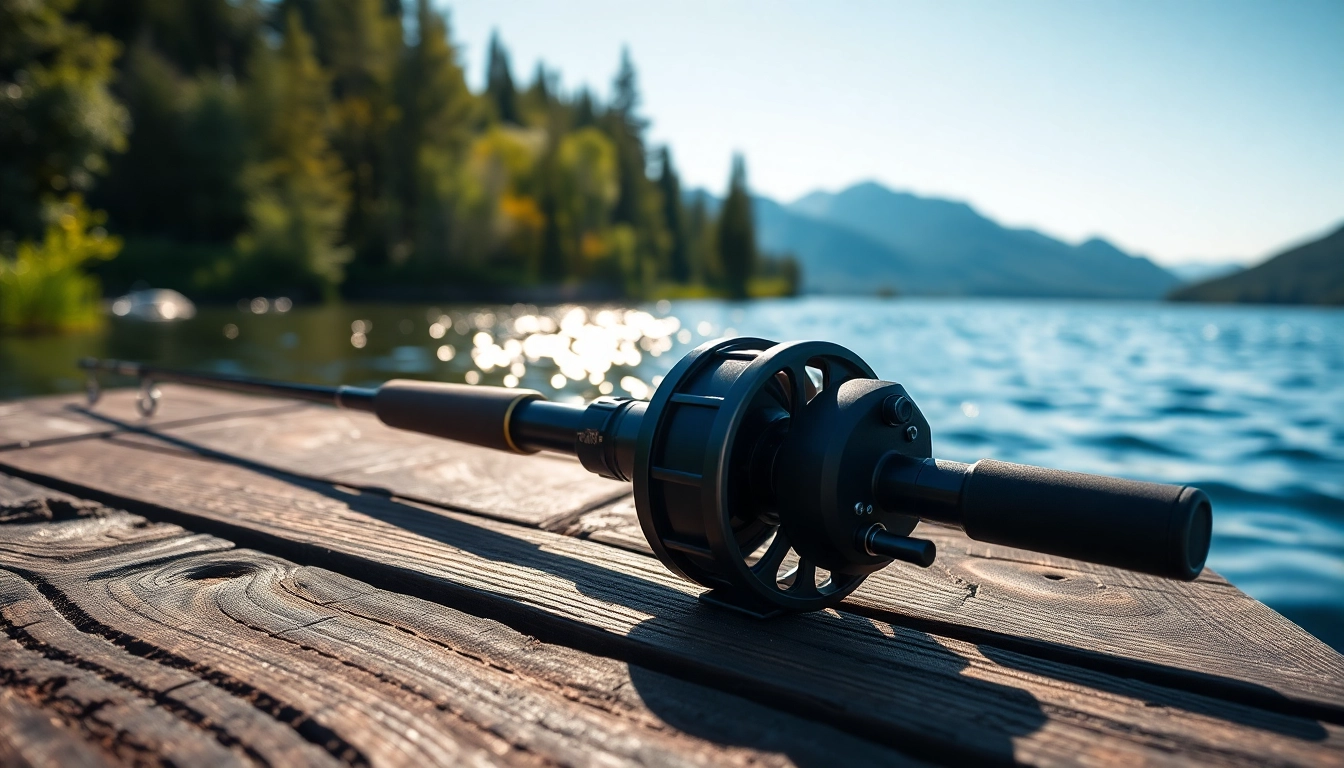The Basics of Fly Fishing Combos
What is a Fly Fishing Combo?
Fly fishing is an art in which anglers use a unique combination of techniques and gear to catch fish that typically inhabit different environments. A Fly fishing combo refers to a bundled set of gear designed for fly fishing, typically including a rod, reel, line, and sometimes additional accessories like flies or tackle. These combos are handpicked for compatibility, making it easier for anglers to start their fly fishing journey without the overwhelming task of selecting each component individually.
Components of a Fly Fishing Combo
A standard fly fishing combo typically consists of four primary components: the fly rod, reel, line, and flies. Each element plays a significant role in ensuring a successful outing on the water.
- Fly Rod: The length, action (flexibility), and material of the rod affect your casting capabilities and the type of fish you can pursue. Generally, beginner rods are more forgiving and easier to handle.
- Reel: This is where the fishing line is wound. A good reel balances the rod and allows for smooth line retrieval, increasing efficiency when catching fish.
- Line: Fly lines are heavier on one end to help cast the light flies. They come in various types, including floating, sinking, and intermediate, depending on the fishing conditions.
- Flies: These artificial baits mimic insects or other food sources, and their size and type can vary based on the fish species targeted.
Choosing the Right Size and Weight
Size and weight consideration is critical in fly fishing. The weight of the fly rod should match the line weight you are using, usually categorized by a number (1 to 12). For example, a 5-weight rod is suitable for freshwater species like trout, while heavier rods (8-weight or more) can tackle larger species such as bass and saltwater fish. The length of the rod also matters; shorter rods are ideal for smaller water bodies, while longer rods offer more casting distance in open waters.
Benefits of Using a Fly Fishing Combo
Simplicity for Beginners
For novices venturing into the world of fly fishing, a pre-packaged combo makes the entire process easier. Since every component is selected for compatibility, beginners can focus on learning casting techniques and understanding aquatic ecosystems rather than worrying about whether their gear will work together.
Cost-Effectiveness of Bundled Gear
Purchasing individual components can quickly become expensive. Fly fishing combos often come at a lower overall price compared to buying everything separately. This bundled approach frequently includes discounts that result in substantial savings, particularly for those looking to dip their toes into fly fishing without breaking the bank.
Optimized Performance
Manufacturers design fly fishing combos with performance in mind. All components are optimized to work together, enhancing the overall experience. Well-matched gear helps ensure accurate casting and smooth retrieves, increasing the likelihood of landing a fish.
How to Select the Best Fly Fishing Combo
Understanding Your Skill Level
Your skill level plays a pivotal role in determining which fly fishing combo will suit you best. Beginners generally benefit from more forgiving gear that is easier to cast, while intermediate and advanced anglers might look for rigs that offer more performance at higher price points. If you are just getting started, it’s wise to select combos that are user-friendly and designed for novice anglers.
Types of Water: Freshwater vs. Saltwater
Understanding the type of water in which you plan to fish is crucial when selecting a combo. Freshwater rods are typically lighter and shorter, suitable for streams and rivers, while saltwater rigs need to endure harsher conditions. Saltwater combos usually consist of stronger components to handle larger fish and their harder environments.
Evaluating Material Quality and Durability
The materials used in the fly rod and reel significantly affect durability and performance. Graphite is a common material for rods because it’s lightweight yet strong, while aluminum tends to be used in reels for its resistance to corrosion. When selecting a combo, ensure you are investing in quality materials that suit your fishing style and environment.
Popular Fly Fishing Combos on the Market
Best Options for Beginners
For beginners, choosing versatile and forgiving gear is critical. Many beginner-friendly fly fishing combos come with easy-to-use reels and rods that allow for smoother casts and good line control. Look for packages that include instructional materials to further ease the learning curve.
Mid-Range Combos for Intermediate Anglers
As skills advance, anglers often seek more refined equipment. Mid-range combos offer better materials and technology, making them ideal for those who have a basic understanding of casting and fishing strategies but still want something reliable without a hefty investment.
High-End Combos for Advanced Users
Advanced fly anglers generally demand the highest level of performance from their gear. High-end combos feature precision engineering and technologies designed to enhance casting distance and accuracy. These setups also usually have a broader range of rod and reel specifications, allowing for a tailored approach according to personal preference.
Maintaining Your Fly Fishing Combo
Cleaning and Care Techniques
Maintaining your fly fishing combo is essential for longevity and performance. After each trip, it’s wise to rinse your rod and reel in freshwater to remove salt or dirt. For the line, a simple wipe with a damp cloth will help remove debris. Regularly check for any signs of wear and replace parts as necessary to keep your gear functioning optimally.
Storing Your Gear Properly
Proper storage of your fly fishing combo prevents damage and extends its lifespan. Store rods vertically to avoid bending, and keep reels free from dust or moisture. If you’re not using your gear for an extended period, consider disassembling it and storing it in a protective case.
Upgrading Components Over Time
As your skill level improves, you may wish to upgrade specific components of your fly fishing combo. Starting with a solid base allows you the flexibility to enhance your setup incrementally, whether you want a lighter rod, a smoother reel, or specialized lines for various fishing conditions. This method of upgrading can be more cost-effective than purchasing a whole new setup.

